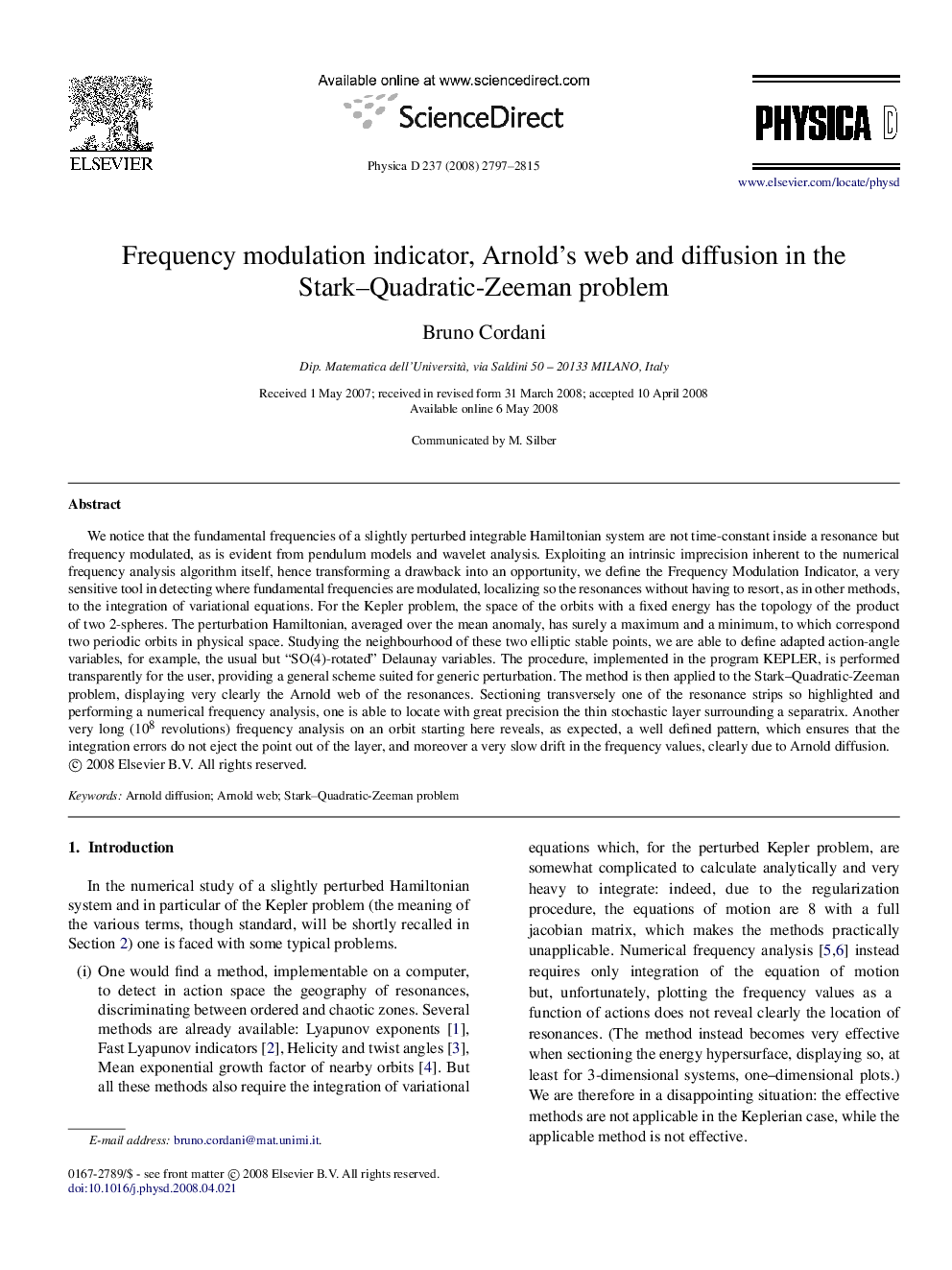| Article ID | Journal | Published Year | Pages | File Type |
|---|---|---|---|---|
| 1897120 | Physica D: Nonlinear Phenomena | 2008 | 19 Pages |
Abstract
We notice that the fundamental frequencies of a slightly perturbed integrable Hamiltonian system are not time-constant inside a resonance but frequency modulated, as is evident from pendulum models and wavelet analysis. Exploiting an intrinsic imprecision inherent to the numerical frequency analysis algorithm itself, hence transforming a drawback into an opportunity, we define the Frequency Modulation Indicator, a very sensitive tool in detecting where fundamental frequencies are modulated, localizing so the resonances without having to resort, as in other methods, to the integration of variational equations. For the Kepler problem, the space of the orbits with a fixed energy has the topology of the product of two 2-spheres. The perturbation Hamiltonian, averaged over the mean anomaly, has surely a maximum and a minimum, to which correspond two periodic orbits in physical space. Studying the neighbourhood of these two elliptic stable points, we are able to define adapted action-angle variables, for example, the usual but “SO(4)-rotated” Delaunay variables. The procedure, implemented in the program KEPLER, is performed transparently for the user, providing a general scheme suited for generic perturbation. The method is then applied to the Stark-Quadratic-Zeeman problem, displaying very clearly the Arnold web of the resonances. Sectioning transversely one of the resonance strips so highlighted and performing a numerical frequency analysis, one is able to locate with great precision the thin stochastic layer surrounding a separatrix. Another very long (108 revolutions) frequency analysis on an orbit starting here reveals, as expected, a well defined pattern, which ensures that the integration errors do not eject the point out of the layer, and moreover a very slow drift in the frequency values, clearly due to Arnold diffusion.
Keywords
Related Topics
Physical Sciences and Engineering
Mathematics
Applied Mathematics
Authors
Bruno Cordani,
